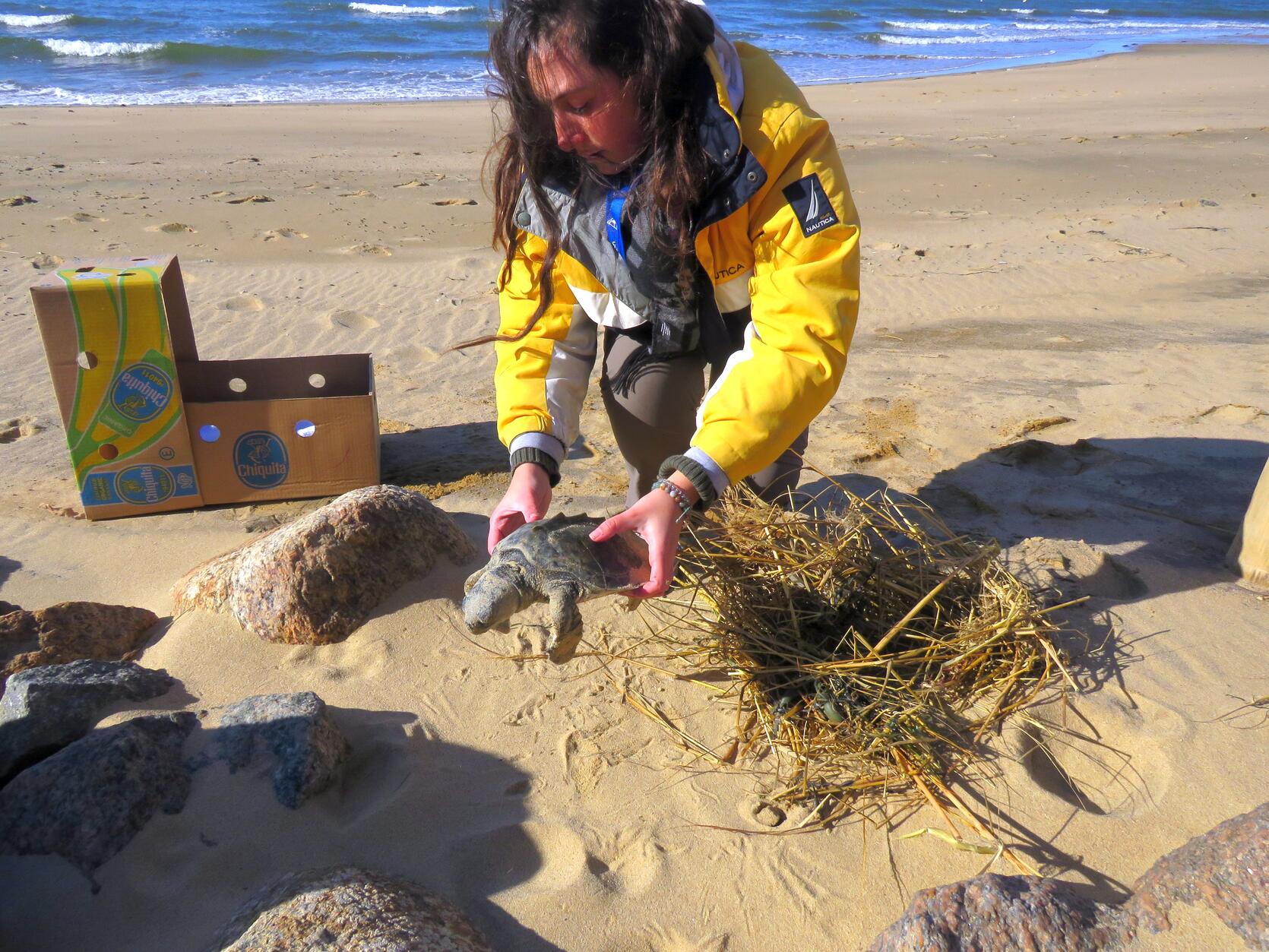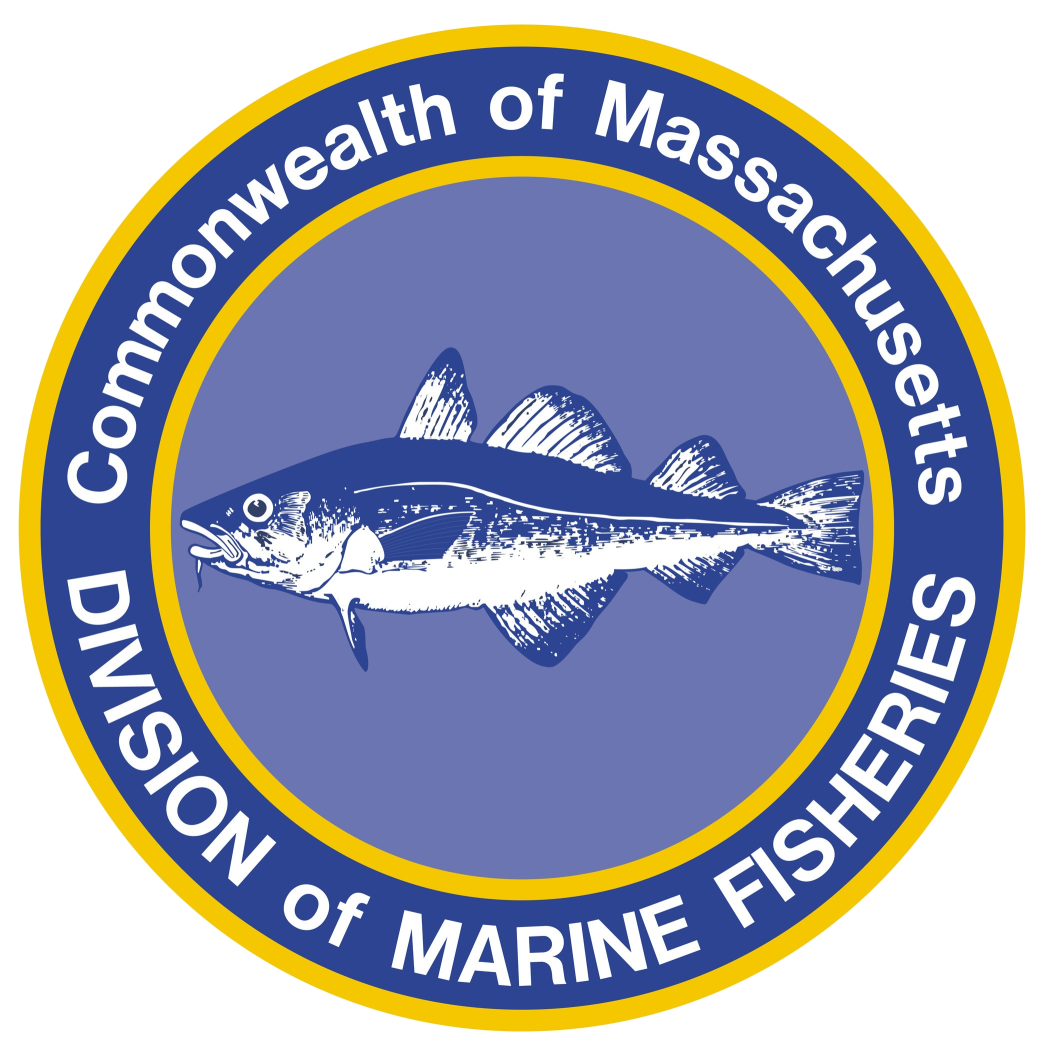- Division of Marine Fisheries

Species Overview
The Kemp’s Ridley (Lepidochelys kempii) is a small, hard-shelled turtle with adults measuring around 2 feet in length and weighing 70 pounds. They are a benthic feeder that prefer shallow sandy or muddy bottom areas and primarily eat crabs. Approximately 7,000–9,000 nesting females exist and almost all return to a single nesting beach, Rancho Nuevo in Mexico, to lay their eggs. In the US they are listed as Endangered under the Endangered Species Act. While adult Kemp’s Ridley are mainly confined to the Gulf of Mexico, juveniles range to temperate coastal areas and are found all along the US East Coast, including as far north as Massachusetts.
While the number of Kemp’s Ridley turtles that enter Massachusetts’ waters is greater than other species of sea turtles, they are almost never seen in Cape Cod Bay during the summer when they are healthy and active. Unfortunately, most all Kemp’s Ridley sightings in Massachusetts are small, cold stunned juveniles that have washed ashore in late fall through early winter. Juvenile Kemp’s Ridley sea turtles are by far the most common cold stunned species and age class in the Northeast, with the Bay-side section of the Outer Cape being the prime stranding location.
An unlikely outcome to warming ocean temps...cold-stunned turtles
Rapidly warming ocean temperatures in the Gulf of Maine have a variety of consequences. While this warming may have negative effects on some species (e.g., cod, copepods, right whales), it is making our waters more suitable for other species (e.g., black sea bass, juvenile Atlantic bonito). For Kemp’s Ridley sea turtles, warming ocean temperatures have expanded the northern extent of their range into Massachusetts waters; however, this shift in habitat is not without risks. Over the last 10 years, strandings by Kemp’s Ridley sea turtles have skyrocketed. The vast majority of these events are caused by cold stunning and occur in late fall when water temperatures fall below 50 degrees Fahrenheit.
Prior to 2009, more than 100 stranded turtles in a year were uncommon. Since then the number of cold stun events has increased dramatically. In 2014, there were over 1,000 cold stunned Kemp’s Ridley in Cape Cod Bay. Researchers have modeled the factors that might influence these events and found that warmer sea surface temperature in the Gulf of Maine best explains the increasing number of cold stunned turtles. The geography of Cape Cod Bay likely impedes the southerly progress of individuals drawn further north by warm waters during summer, trapping them in the Bay as temperatures plummet.
Sea turtles are ectothermic and rely on external heat for body function. If they fail to leave northern waters in time, falling temperatures will wreak havoc on them, causing organ failure, immune system suppression, and infection. By the time they strand, they’ve likely been debilitated for some time, making rehabilitation necessary. Even with that intervention, only around 35% of cold stunned turtles survive. The 2019 cold stun season was relatively calm compared to recent years with around 282 strandings, the vast majority of those being Kemp’s Ridley.
While the North Atlantic population of Kemp’s Ridley has increased over the last 30 years, researchers have not found any correlation between the increased number of hatchlings and the increased incidence of cold stuns. Only around 2% of the juvenile population of Kemp’s cold stuns, making up a small portion of the overall population mortality. However, with the Gulf of Maine predicted to continue warming and given the connection of that trend to the incidence of cold stun, managers and responders should anticipate busy cold stun seasons in the near future.
By Erin Burke, Protect Species Specialist
